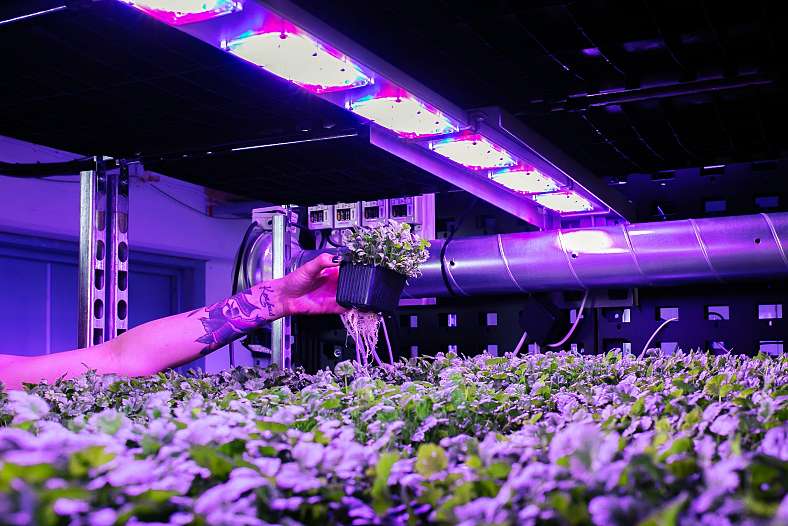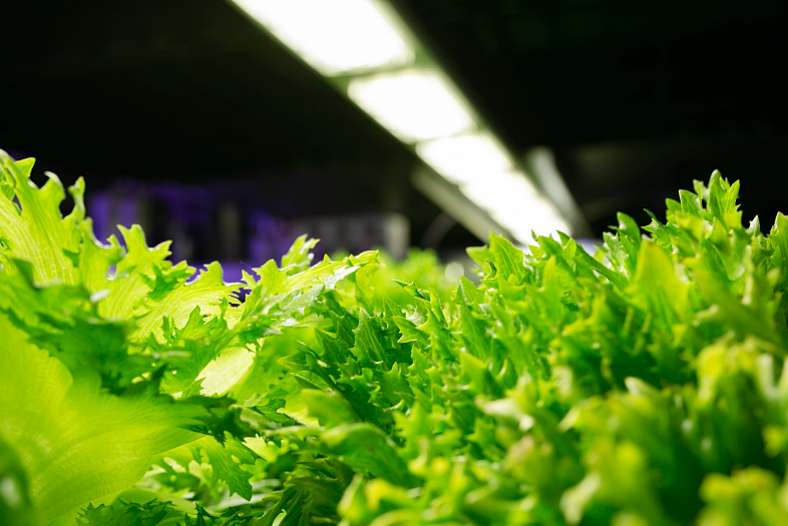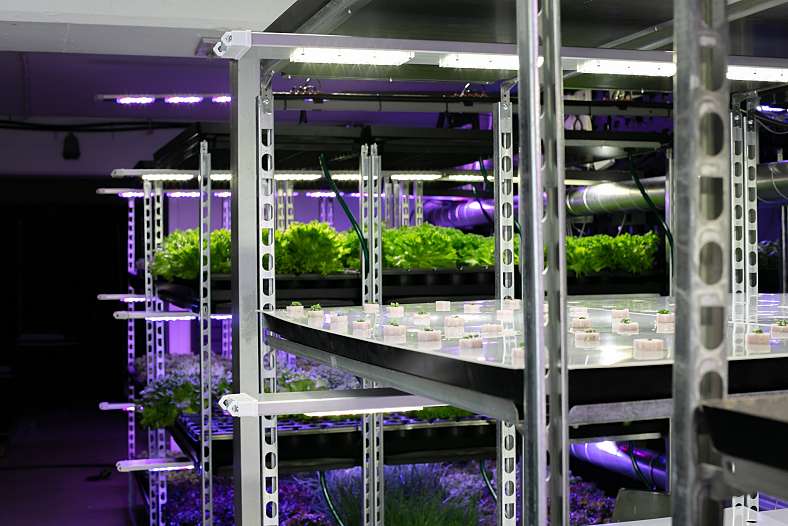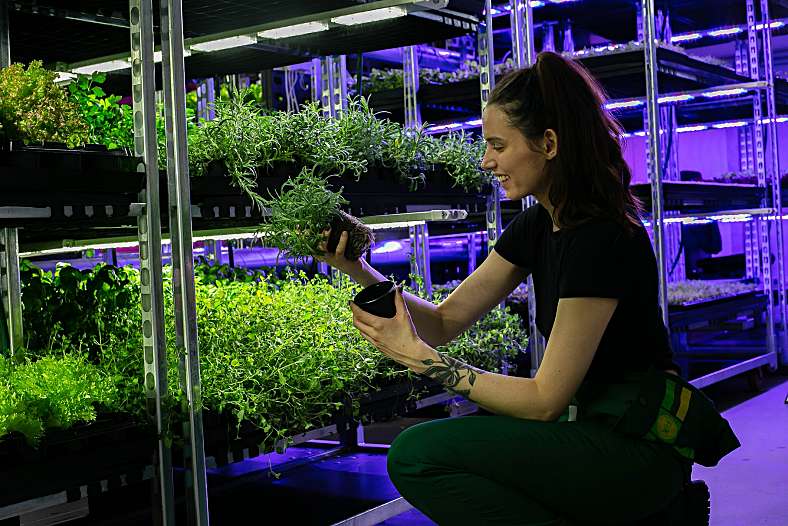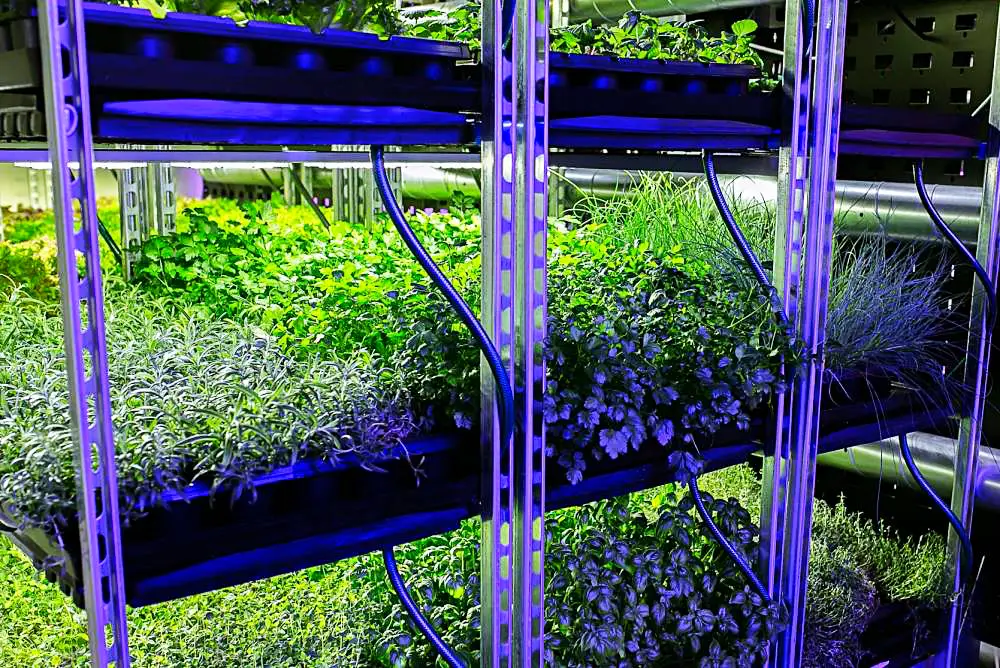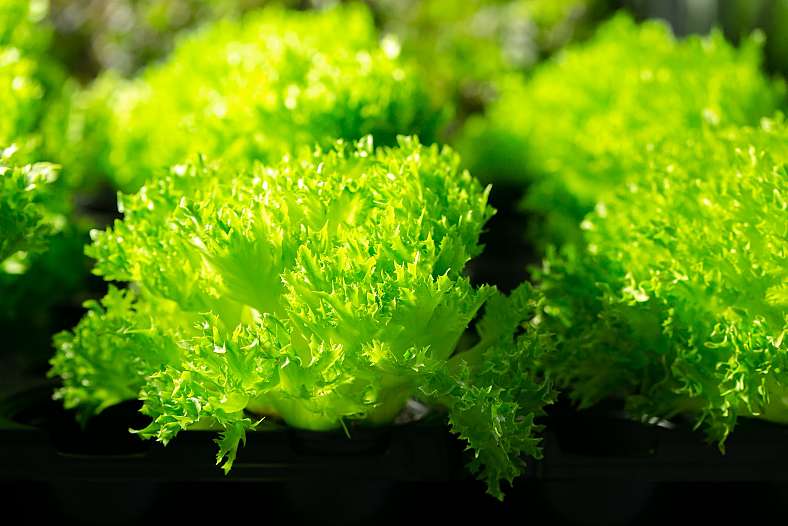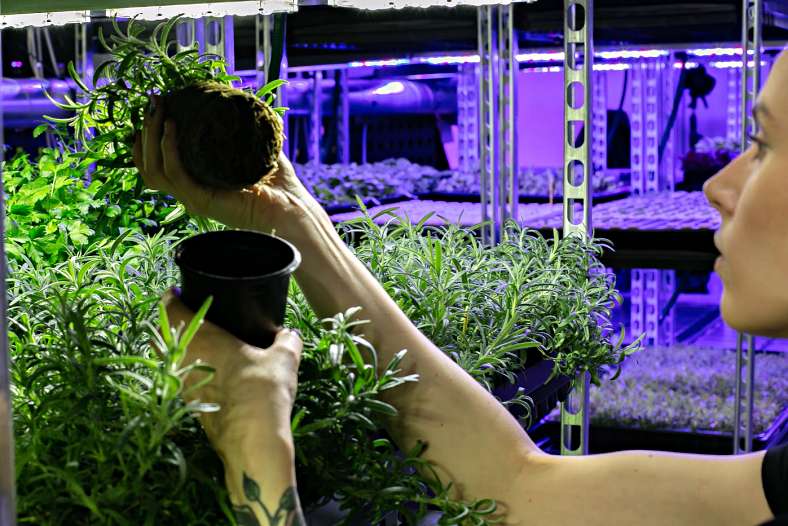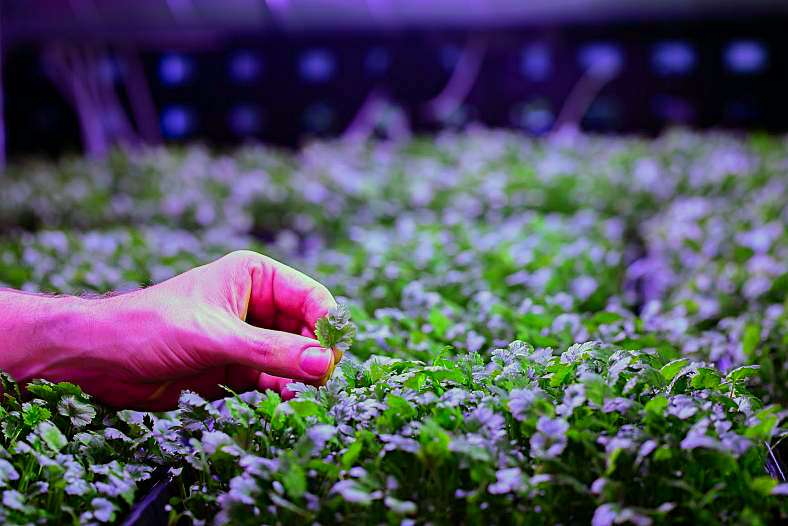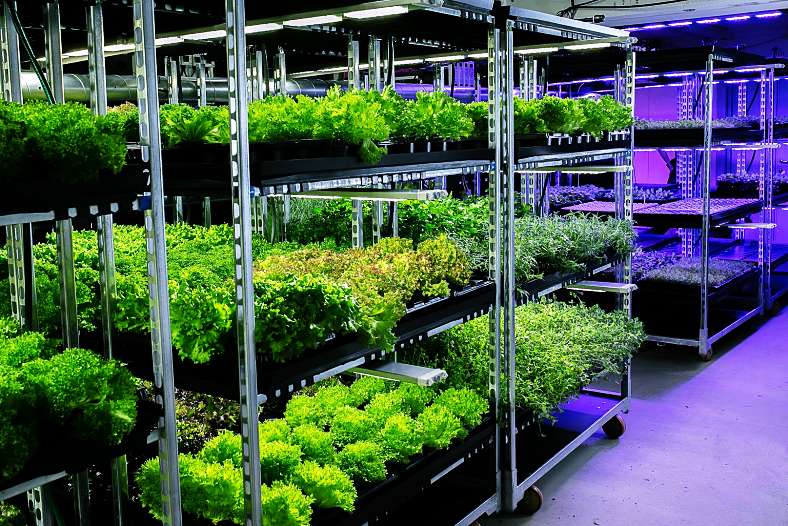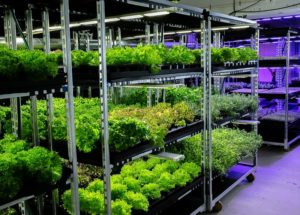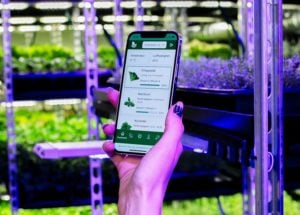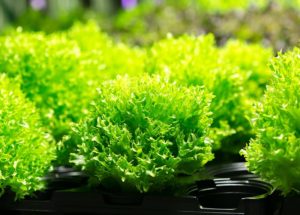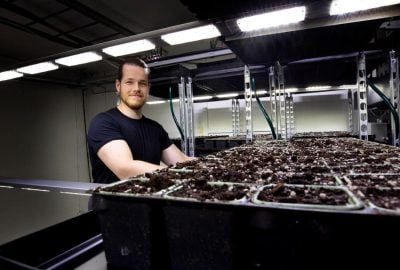There are many reasons to invest in vertical farming. The best one is to get a slice of the pie before it’s too late. The forward momentum of vertical agriculture presents a huge business opportunity. The industry is predicted to expand by 24 percent before 2026, and early investors stand to make the most. However, the window of opportunity might be closing fast.
Indoor plant growth is already a force to be reconned with. It’s a sustainable and profitable farming combo that combats environmental issues and tackles the coming food crisis. This makes it a very marketable and viable industry for the future. Vertical farming is the investment opportunity of a lifetime, and soon, everyone will want a slice of the pie.
«The current food system is broken.»
Erez Galonska – CEO Infarm
In December 2021, German Infarm became the first vertical farming company in Europe, valued at more than one billion dollars. At the time, Infarm grew 75 types of salads, herbs, and microgreens. By 2022 they will add another 40 species to their repertoire, including mushrooms, tomatoes, peas, and strawberries. Infarm’s goal is to establish a global vertical farming network that grows produce in the consumer’s backyard.
Another company that is heavily invested in vertical agriculture is Microsoft Research. In 1980, Microsoft overtook IBM when Bill Gates negotiated a nonexclusive agreement to produce MS-DOS. This allowed Microsoft to license its software to other computer manufacturers, and the rest is history. Since then, Microsoft has never lost its sense of business or invention. Lately, they have invested much in AI development for vertical agriculture.
Microsoft researchers believe that future apartment complexes come with in-house vertical farms. They also think that home delivery of fresh plants will be as common as pizza delivery is today.
Relevant article: Research on vertical farming
Vertical farming is upon us, and it’s developing fast. So how can you be a part of the next agricultural revolution? You can start your own vertical farm; you can buy vertical agriculture stocks or invest in companies related to the vertical farming industry. We’ll get back to the details about your investment opportunities in a minute, but let’s first find out how vertical farming works.
Contents:
- What is vertical farming?
- What are the advantages of vertical agriculture?
- How much can you make from indoor plant growth?
- How to invest in vertical farming?
- Why is vertical agriculture a safe investment for the future?
- Technology makes vertical farming more common than 7/11
- The biggest challenges in vertical agriculture!
- Why should I invest in vertical farming?
What is vertical farming?
Simply put, vertical farming is exactly what it sounds like: Vertically stacked farming. In practice, this means indoor farming in vertically layered growth stations or aeroponic towers. Usually, vertical farming involves CEA (Controlled-Environment Agriculture) and uses cutting-edge technology to optimize plant growth.
The predictability factor in vertical agriculture is key to its success since it facilitates plant growth automation. If you set up the vertical farm correctly, CEA software can manage the production. This prospect has piqued the interest of tech giants like Microsoft and Google.
It’s one thing to invest in the future; it’s another to seek a viable business that can contribute to a sustainable food industry.
UN’s World Population Prospect anticipates our numbers to reach 9,7 billion by 2050. In addition, we know that one-third of all arable land on earth has been damaged by rapid industrialization over the last 40 years. Therefore, less damaging food production methods must be developed to sustain our future population.
Vertical farming is not dependent on arable land, sunny weather, or extensive transport. You can set up and perform indoor farming anywhere. You don’t have to worry about seasonal changes, and you can grow your crops close to the consumers.
On top of that, you don’t need the same kind of workforce as conventional farming requires to optimize your plant growth.
Bloomberg predicts that vertical farming will be a 19,8 billion dollar industry by 2026. This equals a 24 percent growth over the next four years, making vertical farming a promising prospect for investors. Soon, the age of vertical farming will take over our food industry. But, unfortunately, the whole world will know by then, and it will be too late to get in on the action.
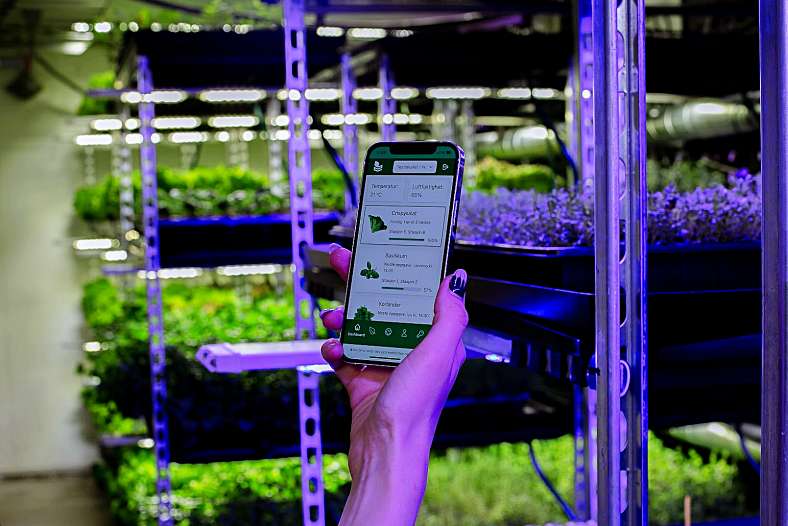
What are the advantages of vertical agriculture?
Compared to conventional agriculture, vertical farming has many advantages. For one, weather conditions are not an issue. Plant conditions are easily stabilized year-round in indoor farms. This makes it much easier to optimize your farming methods.
More importantly, from an investor’s perspective, all-year stability equals predictable production. It makes vertical agriculture more dependable than conventional farms. Vertical farms have 12 yearly growth cycles for salads and herbs. Microgreens can be grown 36 times per year. The result is highly predictable projections and results.
Operational reliability makes way for tactical investments and further industrial growth. Each vertical farm comes with particular presets. As a result, it can be tricky to find the perfect balance between production and income. Still, the potential is enormous if taking good advantage of vertical farming’s key strengths.
Vertical farms save a lot from not dealing with the chores of arable land and conventional farming machinery. In addition, indoor farms rarely need to worry about pesticides or chemicals. All in all, the required workforce is much less than for their outdoor counterparts.
A big selling point for vertical agriculture is plant quality. CEA makes it possible to modify the taste and nutritional values precisely.
We could elaborate on the advantages of vertical farming for many more pages, but we’ve already done so in other articles. If you want to find out more about the strengths and weaknesses of indoor agriculture, we suggest checking out From concept to profit in vertical farming.
How much can you make from indoor plant growth?
Profits from vertical farming mainly depend on production costs and retail pricing. Granted, the startup cost of vertical farming can be steep, but it’s a one-time investment. The yearly cost after that will be radically lower than in conventional agriculture. If you take advantage of the benefits offered by vertical farming, the profits will rapidly increase.
It’s important to keep in mind the worldwide effort put in by plant researchers as we speak. Vertical farming is a tempting prospect to many powerful companies who invest copious amounts in research to lower production costs in vertical farming.
Recently, CEA costs were drastically reduced by the latest advances in LED technology. Rest assured, more scientific breakthroughs will come, and they will increase the profitability of indoor agriculture sooner rather than later.
The pricing strategy of indoor plant growth is another matter of importance. Health-conscious consumers gladly pay extra for chemical- and pesticide-free produce. On top of that, vertical farmers can guarantee superb taste and nutritional value, which allows for higher pricing than products from conventional farming.
Avisomo test site profit numbers
At Avisomo, we made a vertical farming test site. Our production ended up costing $0.74 per salad and herb plant (including labor and equipment). Microgreens landed at $1.02 per plant (including labor and equipment). Retail prices for salads, herbs, and microgreens were set at $1.25, $1.36, and $2.83, respectively.
Each Avisomo station can cultivate 11 m2 of plant growth or 480 pots of produce. This means that the monthly profits from salads and herbs amounted to $245 and $299.5. Microgreens earned $2614 every ten days.
When we cultivated one-third of each plant type – salads, herbs, and microgreens – in one single growth station, the monthly profit landed at $1054. Pay in mind that our test site is tiny as far as vertical farms go. Usually, we’re talking factory floors filled with copious amounts of growth stations.
How to invest in vertical farming?
In essence, there are three ways to invest in vertical agriculture. Option one is to start a vertical farm of your own. This requires a certain amount of knowledge and resources, which Avisomo is ready to provide at your convenience. We can deliver all equipment, affordable down-payment solutions, and the know-how needed to succeed.
Option two is to buy stocks in a vertical farming company. This is an exciting option right now since vertical agriculture is on the brink of changing the food industry as we know it.
The plant growth revolution has already begun in Asia and America. It’s only a matter of time before it affects the worldwide balance of farming and food production. The big questions are when to invest and when the market becomes oversaturated?
Option three is to invest in companies that support the vertical farming industry.
In line with CEA development, the need for indoor farming equipment will skyrocket. The market will demand suppliers of LED lamps, growth mediums, irrigation systems, ventilation systems, and other appliances.
Why is vertical agriculture a safe investment for the future?
It’s not without reason that industry giants like Microsoft and Google invest in vertical farming. And it’s not coincidental that vertical farming companies are booming in America, Asia, and Europe. The expansion of vertical farming is a counteraction to the global exploitation of arable land, climate changes, and the expected food shortage.
Vertical farming won’t solve the world’s problems, but it might relieve conventional farming and stop further exploits of arable land across the globe.
As mentioned, the global population is expected to reach 9,7 billion by 2050. This means that there’ll be 2 billion more hungry mouths to feed. Expanding conventional farming to such an extent is not sensible nor conscionable. Vertical farming, however, can be developed to our heart’s content.
Vertical farming doesn’t need arable land; it only requires a building with good power and water layout, like an abandoned factory. The space saved by vertical farms is one of the most significant environmental gains they offer. In addition, the minuscule water consumption drastically reduces spillage, and the elimination of land transport reduces emissions.
As for the commercial potential of vertical farming, there is no doubt that the need for plant growth will increase in the years to come. Not only are people getting more health-conscious, but we also demand more of the food we consume in terms of taste and nutrition. Indoor plant growth has a huge advantage since it allows for accurate adjustments of taste, appearance, and nutritional value.
Related article: Vertical farming vs. traditional farming

Technology makes vertical farming more common than 7/11
As mentioned, Microsoft Research is investing a lot in AI research for vertical agriculture. This research aims to automate plant cultivation to grow more plants with less manual labor.
AI is essential to plant growth automation because it can monitor plant health more efficiently than the human eye. Indoor farming companies usually grow plants by the millions. Sensors monitor the plants and take countless pictures. Optimal plant growth relies on rapid image analyses.
Microsoft Research is but one team invested in vertical agriculture optimization. Other researchers are working to reduce energy consumption in vertical farming and decrease costs. The latest developments in LED technology have come closer to achieving this goal, but there is still much to save on better solutions.
Since vertical farming still has hurdles to traverse, many skeptics are voicing their concerns about the industry. This recalls an incident from the late 70s when Hewlett-Packard made a fatal investment choice. HP rejected Steve Wozniak’s homemade home computer. They didn’t believe that anyone would be interested in home computers.
The future is already here. Vertical farming has come to stay. The question is, when will the research catch up with the ambition to put vertical farms in every consumer’s backyard? Another question is if you can afford to put off investing until vertical farms are as standard as 7/11?
The biggest challenges in vertical agriculture!
There are no guarantees in life. Nothing comes for free, including success in vertical farming startups. Still, it is possible to prevent you from making the same mistakes as your predecessors. So take advice from us, who already made a bunch of startup blunders, and avoid unnecessary errors.
The biggest misstep towards vertical farming success is not studying your trade requirements. For instance, it is important to realize that the first-time investment will be costly and that vertical farms come with considerable power needs. On top of this, indoor framing requires a workforce and know-how.
We are talking about serious investments, which demand serious dedication. Another thing to be aware of is that vertical farming technology is developed as we speak. This means that you might have to upgrade your equipment frequently to stay ahead of the game.
The safest bet (at the moment) for vertical farming startups is to go all-in and make the production as large as possible. The odds are that the initial expenses will marginalize your profit. However, large plant quantities can create good enough revenue to keep the company afloat. The biggest problem right now is the energy costs of growth lights. Until plant researchers develop new energy-saving technologies, vertical farms will need to cultivate large amounts of produce to cover their losses.
Related article: How to reduce vertical farming energy consumption?
Local challenges
A less talked about but no less important challenge is the issue of market access in your local area. Rules and regulations are different from country to country, state to state, or even city to city. Make sure that you know the ins and outs of the plant production industry where you plan to start up.
Avisomo is based in Norway. In Norway, a handful of large wholesalers, in league with farmers’ associations, control most supermarket plant sales. This makes it hard for vertical farming startups to get a foot in the door and sell their products at supermarkets.
The situation will probably change when the vertical farming industry expands. Indoor farming is, after all, less of a competitor and more of an expansion of conventional agriculture. Both types of farming have a place in our future food industry. There will soon be more mouths to feed than they can handle alone.
Global challenges
Conventional farming has reached its limits, or rather the planet’s limit of arable land exploitation. Vertical farming offers a helping hand. It avoids the depletion of natural resources and offers better-tasting plants with higher nutritional values. When this realization dawns on the general public, curiosity and demand will change the dynamic between farmers, wholesalers, supermarkets, and consumers.
Skeptics to vertical agriculture like to point out technological and environmental hurdles that plant researchers have yet to traverse. Such mindsets are not what successful startups are made of.
Plant science will continue to make strides in the industry, bringing down costs and expanding plant selection. This will strengthen the vertical farming industry and make it a viable business for all.
A strengthened position naturally comes with increased competition, but it also turns vertical agriculture into a staple of our future food industry. It might not save the planet, at least not single-handedly, but that is also the point. To change things for the better, we all have to make an effort, and we all have to cooperate.
Check out our article about the biggest challenges in vertical farming to learn more.
Why should I invest in vertical farming?
What makes vertical farming such an exciting investment opportunity? One very good answer is the industry boom. The vertical farming industry is not adequately established worldwide. Still, it is backed by some of the largest tech companies in the world. Modern vertical agriculture has only been around for about 20 years, but it spreads like wildfire worldwide.
With all its kinks and challenges, the vertical farming industry still makes a good buck today. Imagine the earning potential when all challenges are overcome. Plant science and the food industry will expand their horizons in the years to come, and vertical farming will become more profitable as the market grows.
Successful investment is about timing. No one wants to risk losses by investing too early in an industry that might take years to develop. But, on the other hand, the loss might be even more devastating if an investment opportunity slipped through your fingers when the entry point was still affordable.
The kinks of vertical farming are currently hammered out. Soon, everyone will realize how profitable vertical farming can be. But, then, it will already be too late. So the question is if you want to follow in the footsteps of Hewlett-Packard or IBM? Or do you want to invest in the most significant business opportunity since the dawn of the home computer?
Related article: What does vertical farming mean to investors?
Resources
CNBC: A Dutch vertical farming company has just been valued at over $1 billion
MDPI: State of the Art of Urban Smart Vertical Farming Automation System: Advanced Topologies, Issues, and Recommendations
Microsoft Features: Indoor vertical farming in Asia and beyond: Digging deep in data
The Impact Investor: 4 Ways to Start Investing in Vertical Farming
Tower Garden: Aeroponics: Support your Healthy Lifestyle with Sustainable Gardening


